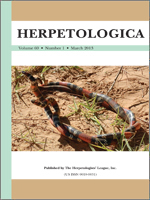Evolutionary and ecological theory generates testable predictions concerning the effects of species interactions on ecological, behavioral, and morphological traits. Throughout Ohio, two closely related and ecologically similar salamander species, Plethodon cinereus and P. electromorphus, occur in similar habitats and in many localities are found in sympatry. Geographic and behavioral patterns previously described between these two species could be the result of interspecific competition, a hypothesis that also predicts distinct patterns of resource use, morphological variation, or both when the two species occur in sympatry. Here we tested these predictions by examining patterns of resource use and morphology in sympatry and compared them to patterns observed in allopatric populations of each species. We found that morphological differences in head shape between species were location-specific, with morphological divergence occurring at some sympatric locations and convergence occurring at others. The degree of food-use overlap was also variable between locations but, in general, the two species used similar food resources.
How to translate text using browser tools
1 March 2013
Complex Species Interactions Lead to Unpredictable Outcomes in Plethodon
Jennifer Deitloff,
Jessica D Petersen,
Dean C Adams
ACCESS THE FULL ARTICLE

Herpetologica
Vol. 69 • No. 1
March 2013
Vol. 69 • No. 1
March 2013
character divergence
competition
competitive exclusion
Plethodon
resource partitioning




